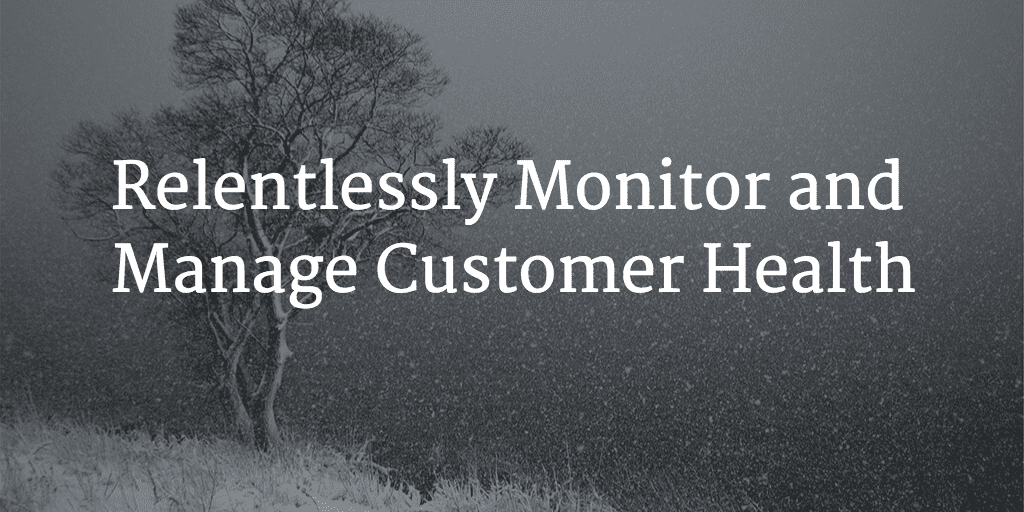Everyone in the Customer Success world is primarily focused on – in one form or another – monitoring and managing Customer Health. This is the one that everybody is talking about and thinking about. Everyone understands how important this is.
And there’s a lot of information about customers that can help you understand and manage customer health…
…but you have to be relentless about this!
There is no way to retain customers unless you are relentlessly managing and monitoring how well they’re doing.
Think about it this way – there’s a natural tendency for a customer and vendor to drift apart if there’s not any intervention. It’s like if you put two rowboats in a lake side-by-side with nobody in either boat.
What’s the likelihood six hours later that those two boats are still side-by-side? It’s basically zero, right? There’s just a natural tendency for them to drift apart.
This is true for customers and vendors as well. They start off with a good relationship. There’s a trust built up between the two parties. A contract is ultimately signed for the exchange of goods and/or services.
The two rowboats in that particular case are side-by-side, but, over time, the winds of change start moving those two boats apart.
The people change on both sides; the product changes; the business model changes etc. There’s a whole list of things that change that push those two boats apart and without somebody getting into at least one of those boats, but preferably both, with a set of oars and rowing those boats back together they won’t stay there.
That’s what I mean when I say relentlessly monitor and manage customer health. You need to know what the circumstances are that lead to churn or at-risk situations, and how to watch for those so you can turn them around as soon as they happen or make sure that they don’t happen at all.
There are myriad things that could/should be tracked as possible risk indicators:
- Reduction in usage
- No/small usage of key features
- Too many Support calls
- No Support calls
- Low survey scores
- Bounces or unsubscribes to Marketing messages
- Sudden stop in references/speaking engagements
- Overdue invoices
- Any combination of the above
Early intervention is often the key to remedying these kinds of situations. In a recurring revenue business, it’s never a question of whether you’ll find out if a customer is not happy, it’s simply a matter of when.
If you run on a renewal cycle, finding out that a customer is struggling as you approach the renewal is often too late.
Even if you do save the customer, it may come at the cost of free Services, reduced contract value, or extending the contract. None of these are good. Monitor customer health to stay ahead of these challenges.

